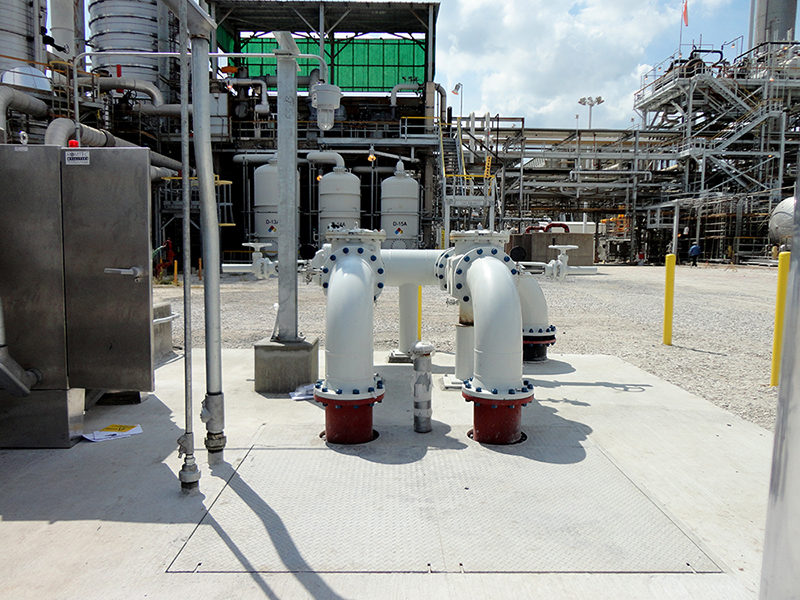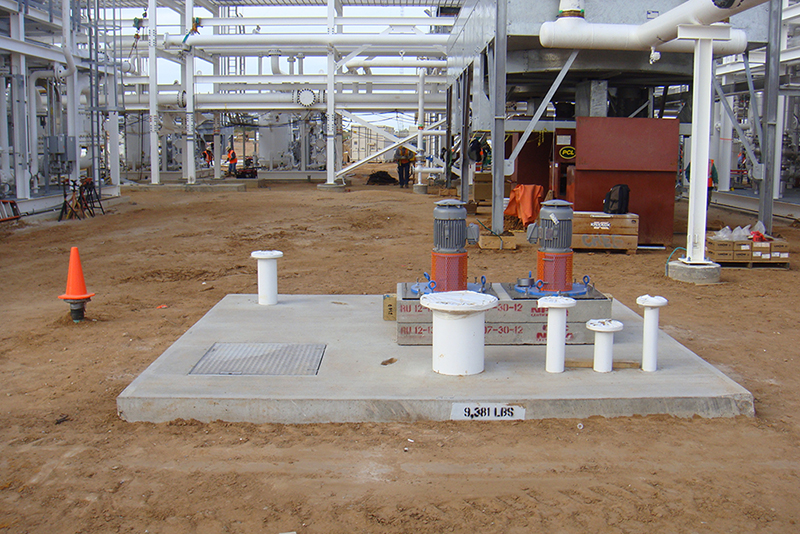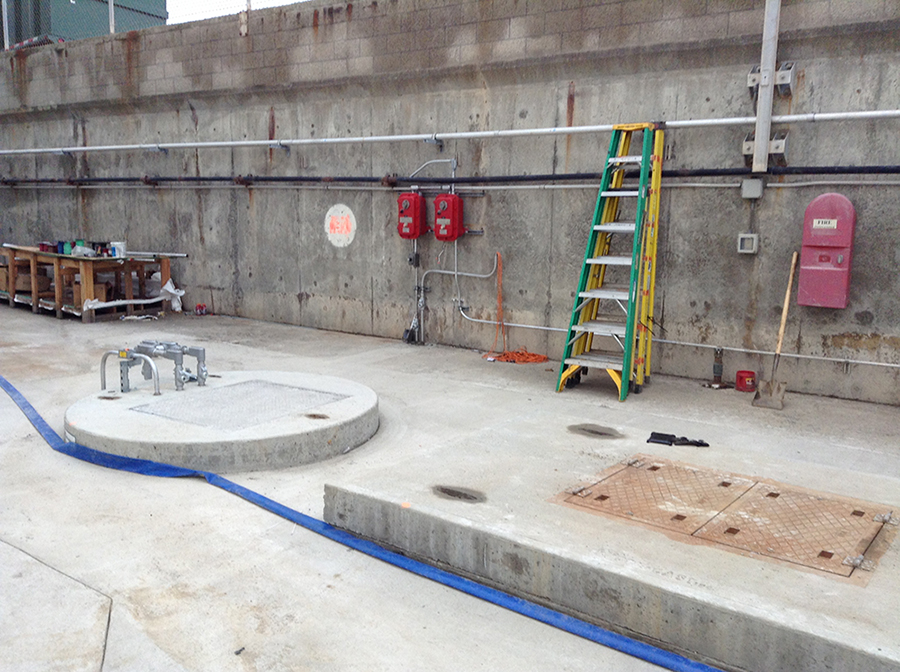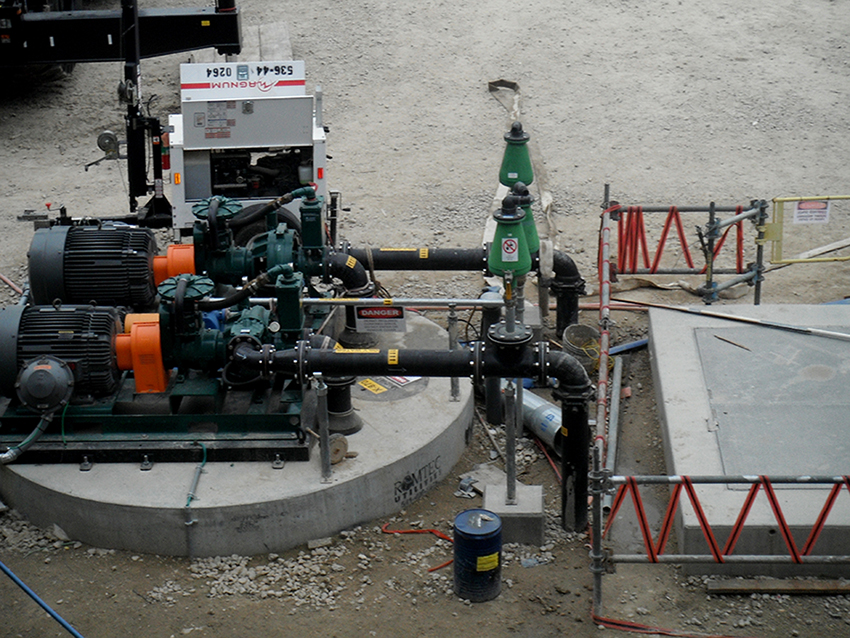
Industrial water is the center of this week’s discussion on water types. In the previous two entries, wastewater and stormwater were discussed to show how the source of the water flow into the pump station can implicate the design of the system. This is also true with industrial water except that industrial water is not actually a water type. Industrial water is wastewater, stormwater, or clean water from or on an industrial facility. The reason to classify industrial water as a separate water type is to underscore the importance of specifying an industrial application. The major design implications as related to the source of industrial water are based on the industry for which the pumping system is designed.
For the purposes of this blog, when we talk about industrial wastewater we are going to assume that it is not simply sanitary sewer, but process water or mixed wastewater. There are many different sources for industrial wastewater, and Romtec Utilities has designed and supplied many pumping systems for these applications. Knowing the industry of the plant creating the wastewater can help our engineers use their experience to make design decisions.

Romtec Utilities has designed pumping systems for power generation, oil refineries, natural gas refineries, pharmaceutical, food processing, chemical processing, tech industries, and other industrial applications. In each industry there are design tendencies for how to deal with wastewater pumping. For example, food processing plants generally will have two conditions with wastewater: the presence of food solids and stringent cleaning chemicals. In most circumstances, this wastewater can be pumped with sewage to onsite treatment, pretreatment, or to municipal treatment if the water chemistry meets public approval. Knowing the tendencies of wastewater from food processing, Romtec Utilities can recommend design features such as grinder pumps, solids handling pumps, stainless steel hardware, or sump liners, depending on the specific water chemistry.
These design decisions are different for each industry. In chemical processing, stainless steel or fiberglass basins will be appropriate for a wider range of projects. On pumping systems for natural gas refineries, design considerations such as intrinsically safe circuits and explosion proof hardware are typically going to be required. It is also possible to include surface-mounted equipment to handle the same requirements. These types of tendencies are too numerous to list, but understanding how each industry is different helps develop safe and reliable pumping systems for industrial wastewater.

Stormwater is a rapidly expanding area of environmental concern, and few organizations are as thorough as industrial companies when requiring reliable pumping systems to handle stormwater. Industrial facilities that produce or handle potentially dangerous materials to the environment often request high degrees of redundancy and robust componentry. There are a number of design considerations that can also be assumed or proposed just by understanding the specific concerns and capabilities of the industry.
For industries such as pharmaceutical or oil refineries, leaking basins are a common concern that should be handled in the design of the pumping system. Romtec Utilities offers several methods for safeguarding against potential leaks or leeching. In these types of industries, wet well options such as monolithic cast concrete, stainless steel, fiberglass, double-wall, and leak detection can all be proposed. Options such as these are commonly selected based on the industry standard, water chemistry, preference, or level of required defense. Typically, pumping systems designed to handle industrial stormwater are very robust and spared no expense for including environmental safeguards.
Industrial clean water is unlike wastewater and stormwater because the water chemistry is typically not a major concern. The similarity with clean water is that designing a pumping system for industrial clean water is also highly influenced by the industry for which the system is designed. For example, many types of power plants employ large condensers to cool water that is heated to spin steam turbines. The water used in the condensers and the water used for steam will typically be handled by a pumping system. This water is handled as clean despite being used in an industrial process. In this example, the water coming from a condenser is likely hot, so a pumping system for this clean water application should be designed to handle consistent high temperatures.

Pumping clean water for industrial reuse is also a common scenario for many industries. This would be typical for water such as that mentioned in the previous example, but it can also be pumped from onsite treatment. When pumping to reuse, it may be necessary to pump into an existing pressure main. The design of the pumping system in many reuse scenarios will include pumps, valves, and piping capable of handling high head pressure. Depending on the specific industry, hot water and high head pressure will be common design scenarios for industrial clean water.
The reason that Romtec Utilities recognizes industrial water as a unique water type is because designing pumping systems for industrial clients requires a specific way of thinking that is different than with other clients. Each industry carries a distinct set of standards and tendencies that can be above and beyond what is typically required for wastewater, stormwater, and clean water in non-industrial scenarios. Romtec Utilities has the experience and expertise needed to help many different types of industrial customers get the best pumping systems designed and supplied for each unique application.
